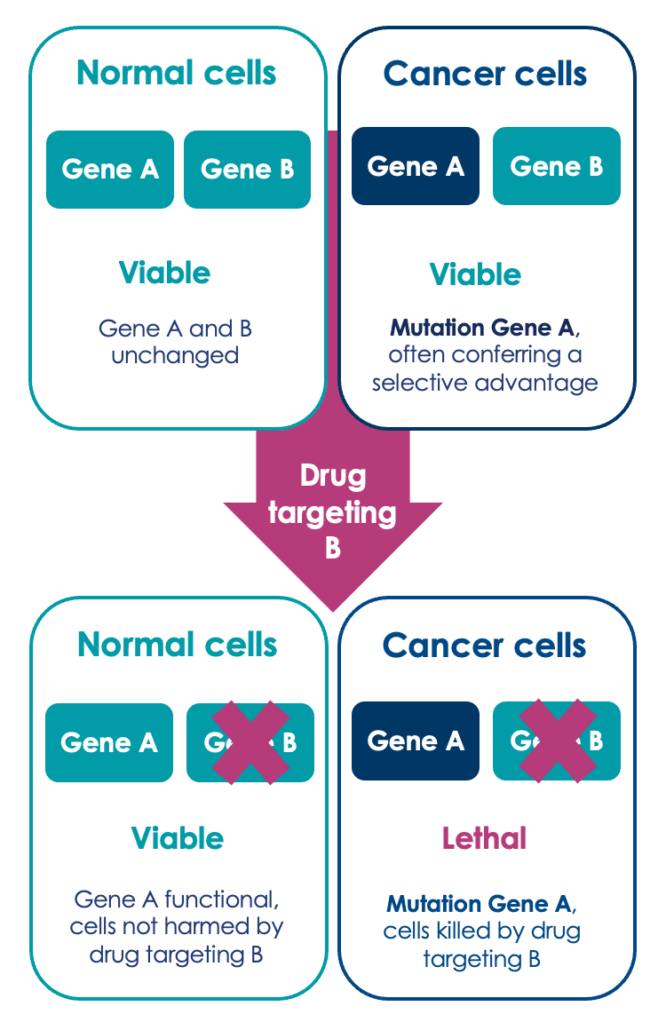Pioneering scientific approach to redefine synthetic lethality
Driven by a deep scientific understanding and leveraging our innovative experimental approaches, state-of the-art screening assays and proprietary bioinformatics platform, we are validating synthetic lethal targets in cancer that have previously been unexplored or considered intractable.
Alternative Lengthening of Telomeres (ALT) Program
Our lead program targets ALT cancers through the FANCM protein complex.
Tumor suppressor Loss-of-Function (LoF) Program
Tessellate Bio’s LoF program targets cancers with loss of tumor suppressor retinoblastoma 1 (RB1).
About synthetic lethality
The classic concept of synthetic lethality describes a situation in which mutations that lead to loss-of-function in two genes together result in cell death, but a mutation in either of the genes alone does not.
Cancer cells that only have one mutated gene in a specific pair of genes can depend on the second gene for survival. Disrupting the function of the second gene such as through pharmacological intervention causes selective cancer cell death.


Clinical validation
The concept of synthetic lethality is best exemplified by poly-ADP-ribose polymerase (PARP) inhibitors which target tumors deficient in Homologous Recombination DNA repair.
Advantages of targeting synthetic lethality
Compared to conventional approaches, synthetic lethality provides:
A way to kill cancer cells while not affecting healthy cells
Maximizes therapeutic benefit while minimizing undesirable side effects
Support for the concept of tumor agnostic treatments
The molecular targets and corresponding biomarkers are well-defined, ensuring best-in-class companion diagnostics
Why is Tessellate Bio redefining synthetic lethality?
Most synthetic lethality-based therapeutics are targeting specific gene mutations related to Homologous Recombination Deficiency (HRD).
Tessellate is progressing beyond HRD, serving a large patient population with an unmet medical need and often without available molecular targeted therapies.
Target space beyond HRD accounts for more than 80% of all cancers
Our programs could bring new targeted therapies to millions of patients in need of effective treatments.